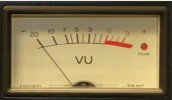We had terrible problems with freezing and picture break-up with our FVP5000T and I eventually contacted Humax support for an answer.
Initially I was told to do a Factory Reset.
I did this, twice, and each time it was OK for a day or so before the problems returned.
They suggested I replace the HDD and since they are only £15 off Amazon and it is an easy job I did that.
It made no difference.
After more searching for answers I found several people suggesting it was too strong a signal.
We were puzzled by this since we are still using an old fairly basic aerial dating from the late 1970's.
Then another engineer from Humax replied to me also suggesting it was a signal strength problem.
When I checked I found I had 100% strength and 100% quality, so I bought a 6db attentuator and plugged this into the aerial socket behind the TV.
This dropped the signal on BBC1 to 98% and seemed to cure the freezing except on one channel.
I got back to Humax to be told that I needed a stronger attenuator as the signal strength should be BELOW 90% !
I then found a cheap variable attenuator at Toolstation and the reviews there included 'just right for stopping Humax from freezing' !
I now have one and have set the signal strength to around 85-90% on various channels.
If this is such a WELL KNOWN PROBLEM then WHY don't Humax TELL US to start with when we buy their products !
Initially I was told to do a Factory Reset.
I did this, twice, and each time it was OK for a day or so before the problems returned.
They suggested I replace the HDD and since they are only £15 off Amazon and it is an easy job I did that.
It made no difference.
After more searching for answers I found several people suggesting it was too strong a signal.
We were puzzled by this since we are still using an old fairly basic aerial dating from the late 1970's.
Then another engineer from Humax replied to me also suggesting it was a signal strength problem.
When I checked I found I had 100% strength and 100% quality, so I bought a 6db attentuator and plugged this into the aerial socket behind the TV.
This dropped the signal on BBC1 to 98% and seemed to cure the freezing except on one channel.
I got back to Humax to be told that I needed a stronger attenuator as the signal strength should be BELOW 90% !
I then found a cheap variable attenuator at Toolstation and the reviews there included 'just right for stopping Humax from freezing' !
I now have one and have set the signal strength to around 85-90% on various channels.
If this is such a WELL KNOWN PROBLEM then WHY don't Humax TELL US to start with when we buy their products !

